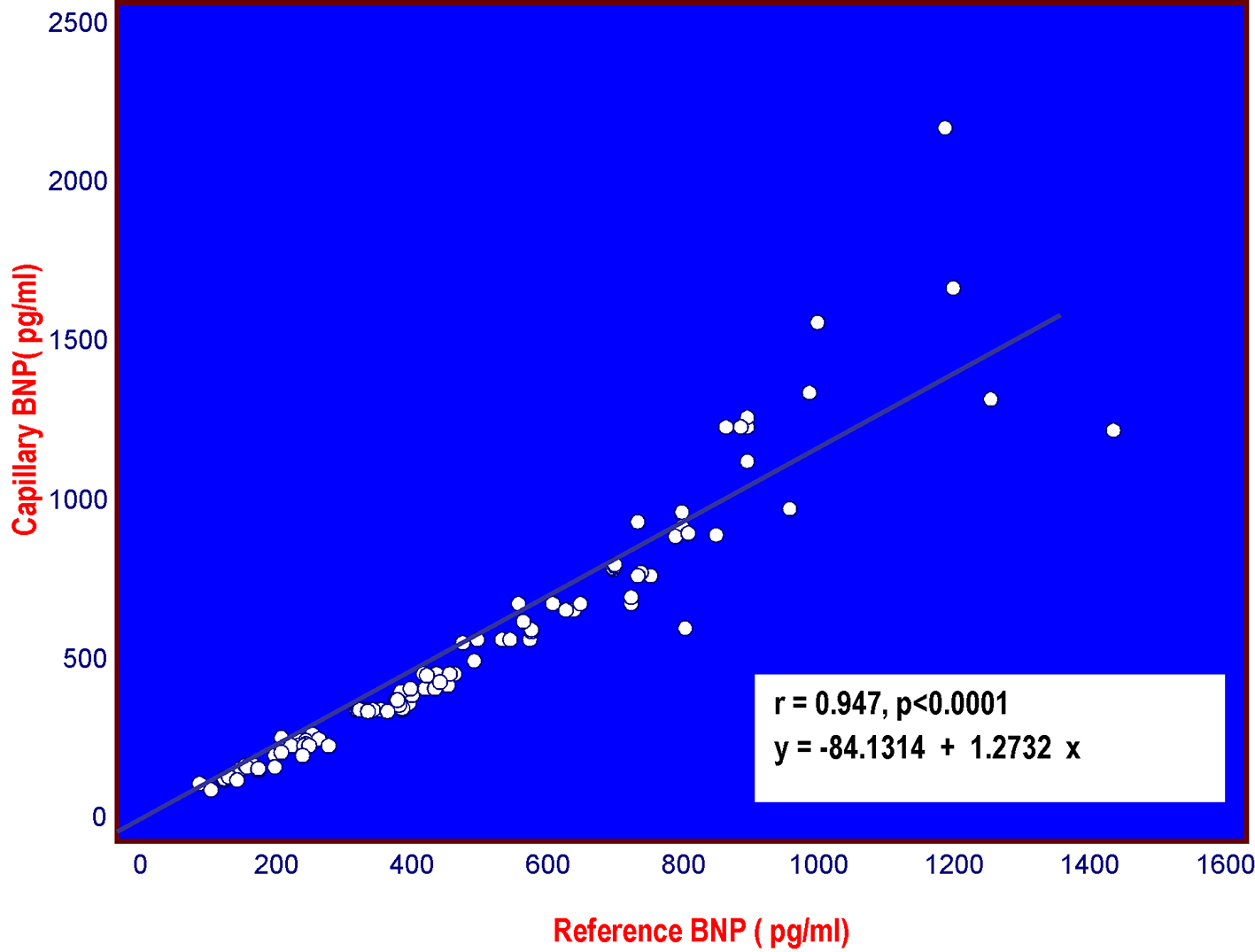
Figure 1. Distribution of capillary BNP measured on the Alere Heart Check system according to plasma BNP measured on the Abbott Architect System among the 111 patients with CHF, examined in the study.
| Cardiology Research, ISSN 1923-2829 print, 1923-2837 online, Open Access |
| Article copyright, the authors; Journal compilation copyright, Cardiol Res and Elmer Press Inc |
| Journal website https://www.cardiologyres.org |
Original Article
Volume 7, Number 2, April 2016, pages 51-58
Measuring B-Type Natriuretic Peptide From Capillary Blood or Venous Sample: Is It the Same?
Figures

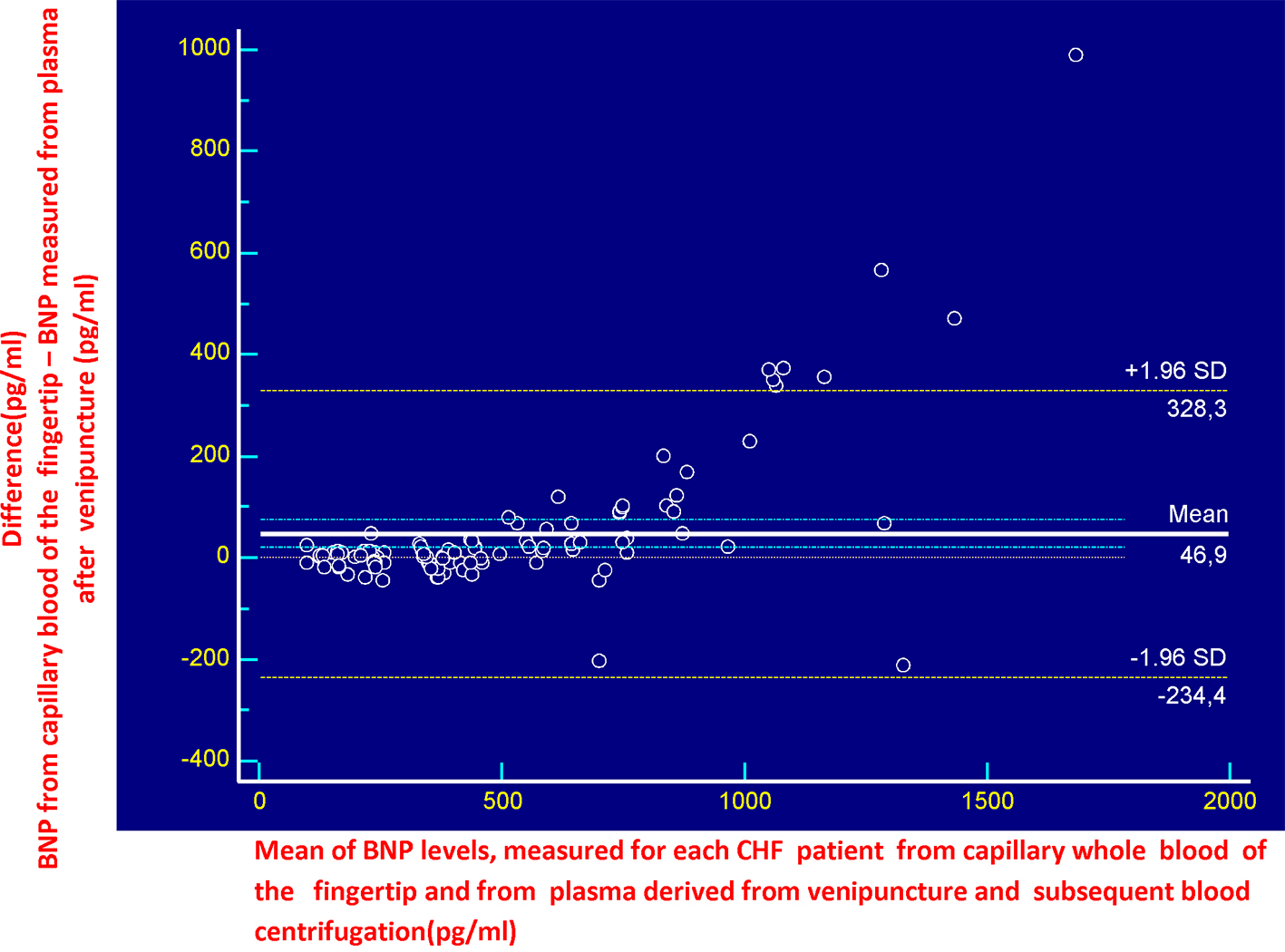
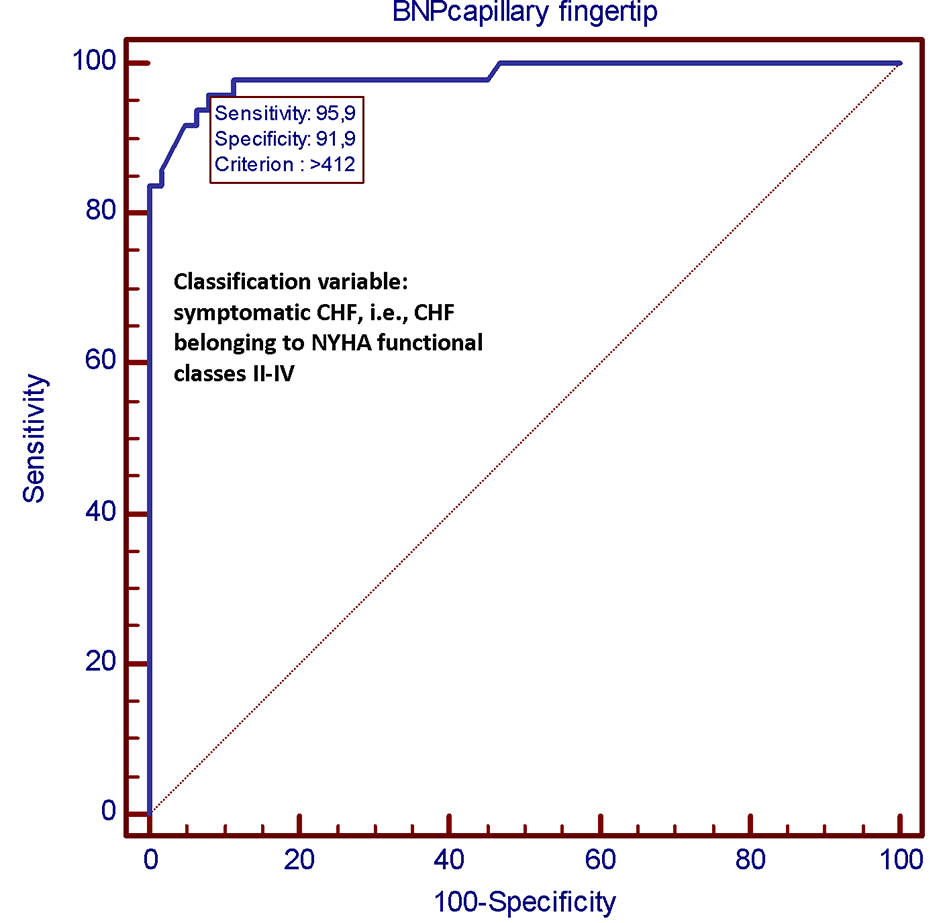
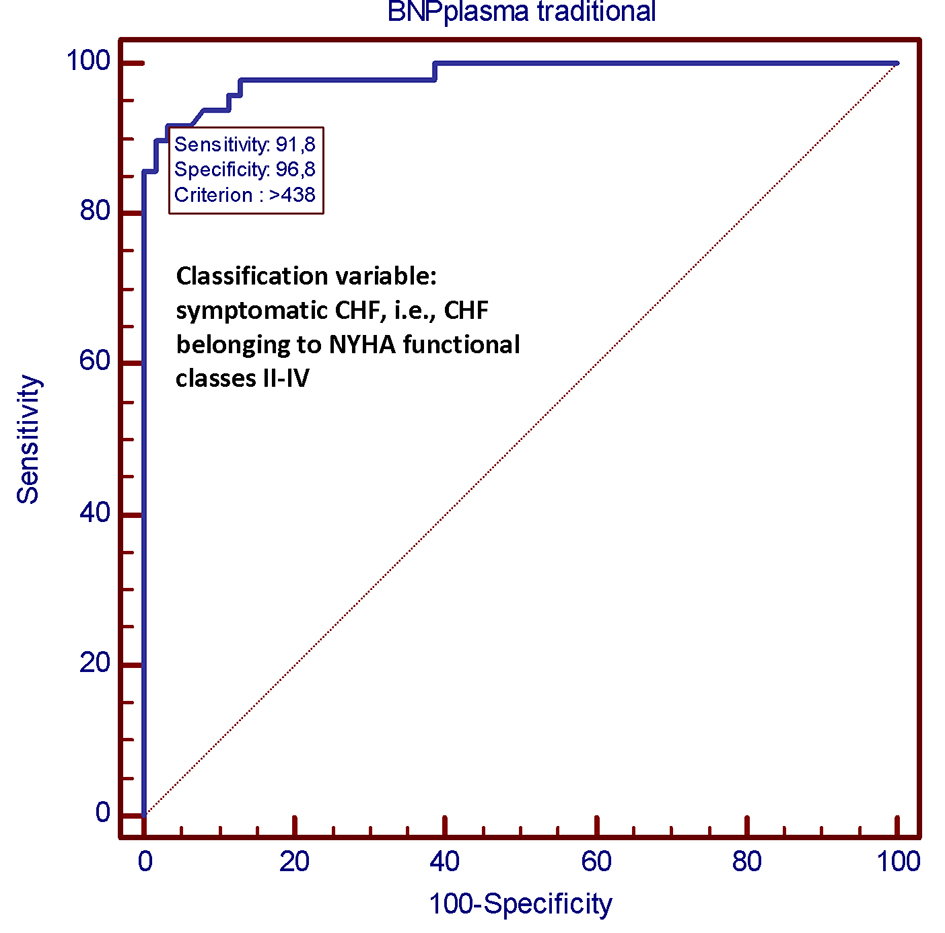
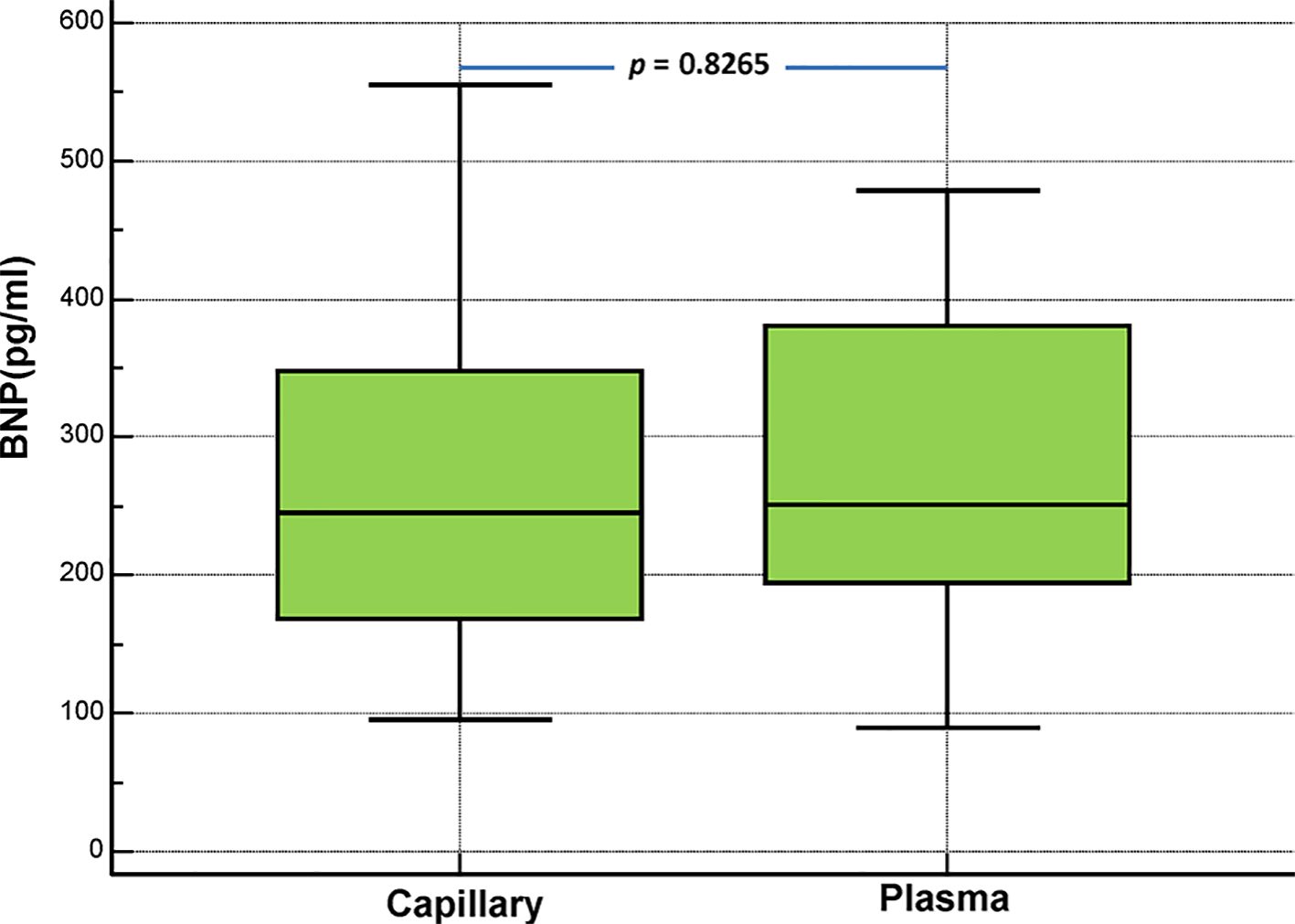
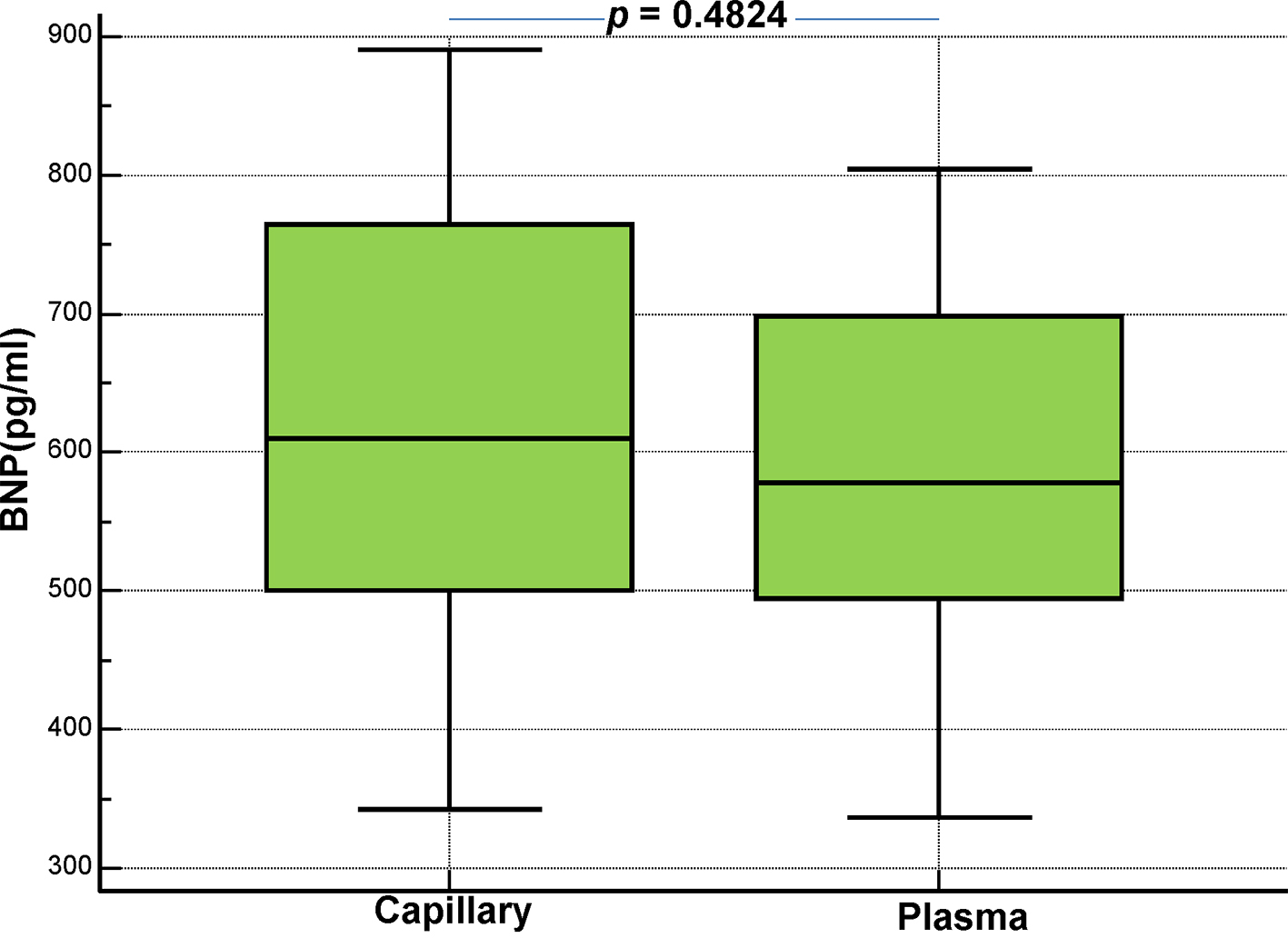
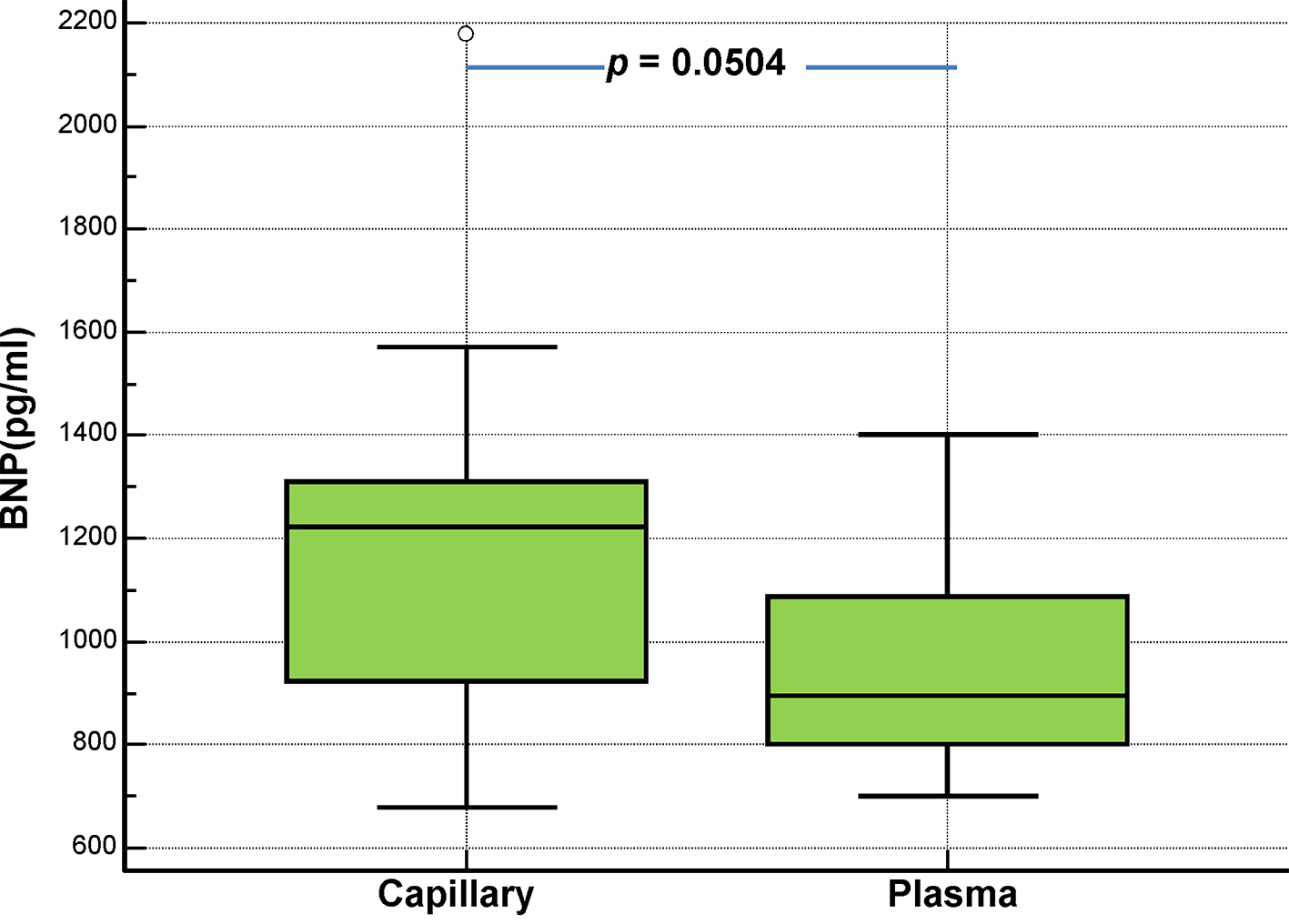
Tables
| System | Sample type | CV low control | CV high control | Reference |
|---|---|---|---|---|
| CV: coefficient of variation; EDTA: ethylenediaminetetraacetic acid. | ||||
| Abbott Architect** | EDTA plasma | 5.5% | 3.2% | [6] |
| Abbott i-STAT* | EDTA whole blood | 14% | 9.8% | [6] |
| Alere Heart Check* | Capillary whole blood | 10.1% 8.4% | 18% 14.1% | This study [8] |
| Alere Triage* | EDTA plasma | 9.2% | 11.4% | [9] |
| NYHA class | Symptoms |
|---|---|
| I | Heart disease, but without resulting limitations of physical activity. Ordinary physical activity is not limited, but symptoms appear for activities out of the ordinary. |
| II | The patient is fine at rest but ordinary physical activity causes the appearance of symptoms. |
| III | Symptoms appear for even slight physical activities but the patient is fine at rest. |
| IV | The patient is unable to carry out any activity; he has symptoms even at rest. |
| Characteristics | |
|---|---|
| BMI: body mass index; NYHA: New York Heart Association; LVEF: left ventricular ejection fraction; CKD: chronic kidney disease; eGFR: estimated glomerular filtration rate; ICD: implantable cardioverter defibrillator; PM: pace-maker; BNP: B-type natriuretic peptide; ACE-I: angiotensin converting enzyme inhibitor; ARB: angiotensin receptor blocker. | |
| Age | 58 (47 - 65) |
| BMI | 24.7 (21 - 29.2) |
| Men | 72 (65%) |
| NYHA I | 62 (55.8%) |
| NYHA II | 30 (27%) |
| NYHA III | 19 (17.1%) |
| LVEF (≤ 50%) | 54 (48.6%) |
| LVEF (> 50%) | 57 (51.3%) |
| Patient history | |
| AF | 34 (31%) |
| Moderate-to severe CKD (eGFR< 60 mL/min/m2) | 47 (42%) |
| Hypertension | 53 (48%) |
| Diabetes | 24 (22%) |
| ICD/PM | 17 (15%) |
| Etiology of heart failure | |
| Ischemic | 49 (44.1%) |
| Valvular | 17 (15.3%) |
| Hypertensive | 22 (19.9%) |
| Idiopathic | 20 (18%) |
| Others | 3 (2.7%) |
| Biology | |
| eGFR (mL/min/m2) | 67 (54 - 82) |
| Hematocrit (%) | 42 (39 - 45) |
| Capillary BNP (pg/mL) | 400 (245 - 678.75) |
| Plasma BNP (pg/mL) | 399 (246.5 - 699) |
| Bilirubin (µmol/L) | 13 (9 - 17) |
| Therapy | |
| Beta-blocker | 100 (90%) |
| Diuretics | 82 (74%) |
| ACE-I/ARB | 94 (85%) |